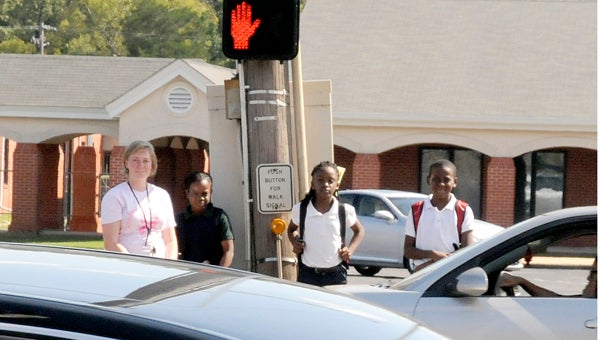Elementary students dodge traffic while flyover funding is parked
Published 10:28 pm Thursday, September 13, 2012

More than 100 students, ages four to 11, cross U.S. Highway 80 each day on the way to school. One student fell last year and was almost hit by a truck on the five-lane highway. A flyover is wanted, but no funds are available for the $1 million project. -- Ashley Johnson
As school bells ring loud again from the return of students to classrooms from summer, one carpool line is growing exponentially as parents have varying concerns for their children walking to school.
Edgewood Elementary sits on the corner of one of the busiest streets in town — U.S. Highway 80. Last year parents raised and voiced their concerns about children crossing over this dangerous street and conversations began with officials who could potentially build a flyover— a walk-over path or even a bridge —from one side of Highland to the other.
More than 100 students walk to school over the highway, accounting to about 25 percent of the school’s total population.
“The problem is that is a state road, so the Selma City School System can’t do anything about it,” Ray Mathiews, Director of Operations for the school system said. “Last year we met with the [Alabama Department of Transportation] and other officials, and ALDOT said they did not have the funds to build what we needed.”
Mathiews said ALDOT informed those in the conversation that it would be an extremely costly project, probably costing well over $1 million in state funds.
There is one walk over in town for access to Selma High School. The difference is that crosses over a city street with two lanes — not a five-lane state highway like the one Edgewood students have to cross daily.
“And that is for bigger kids,” Joe Peterson, principal of Edgewood Elementary said about the bridge to Selma High School. “It’s five lanes we are talking about crossing. We still have anywhere from a 4-year-old child to an 11-year-old child crossing that highway, sometimes without adult supervision.”
Peterson said some students cross the highway without adult supervision because they arrive at school early in the morning before the staff arrives if their parents and guardians work. He said not too many parents are concerned this year, but last year when conversations were going on with ALDOT, parents voiced their opinions.
“Kids are in danger and we have had some close calls,” Peterson said. “One kid fell and a truck came close to him, and it scared the life out of the child but he didn’t get touched by the truck. It was too close of a call.”
Though ALDOT did not have funding to make some type of bridge for pedestrians, Peterson said they were able to make some modifications. Modifications like new signage and even the speed limit was decreased to 15 mph while most school zones are 25 to 35 mph.
“[Now] we have the signs, the electronic signs and walk signs,” Peterson said. “Before, we had the button to press to change the light for walkers but they came in and installed a new one and they were going to put some type of speed bumps out there, but that never happened.”
The result is many parents pick up their children in cars, leaving Montague Street as a one-way carpool line in the mornings and afternoons.
“Most of out parents don’t trust [children] to walk home for various reasons, so our carpool line doubled last year,” Peterson said.
Because of this what once was a two-lane carpool line has now grown to three and the road is closed during the start of school and the end of school. At that time, Montague becomes a one-way street.
“That carpool line used to end at the second cross walk on Montague, but now it goes way on past the basketball court,” Peterson said.





